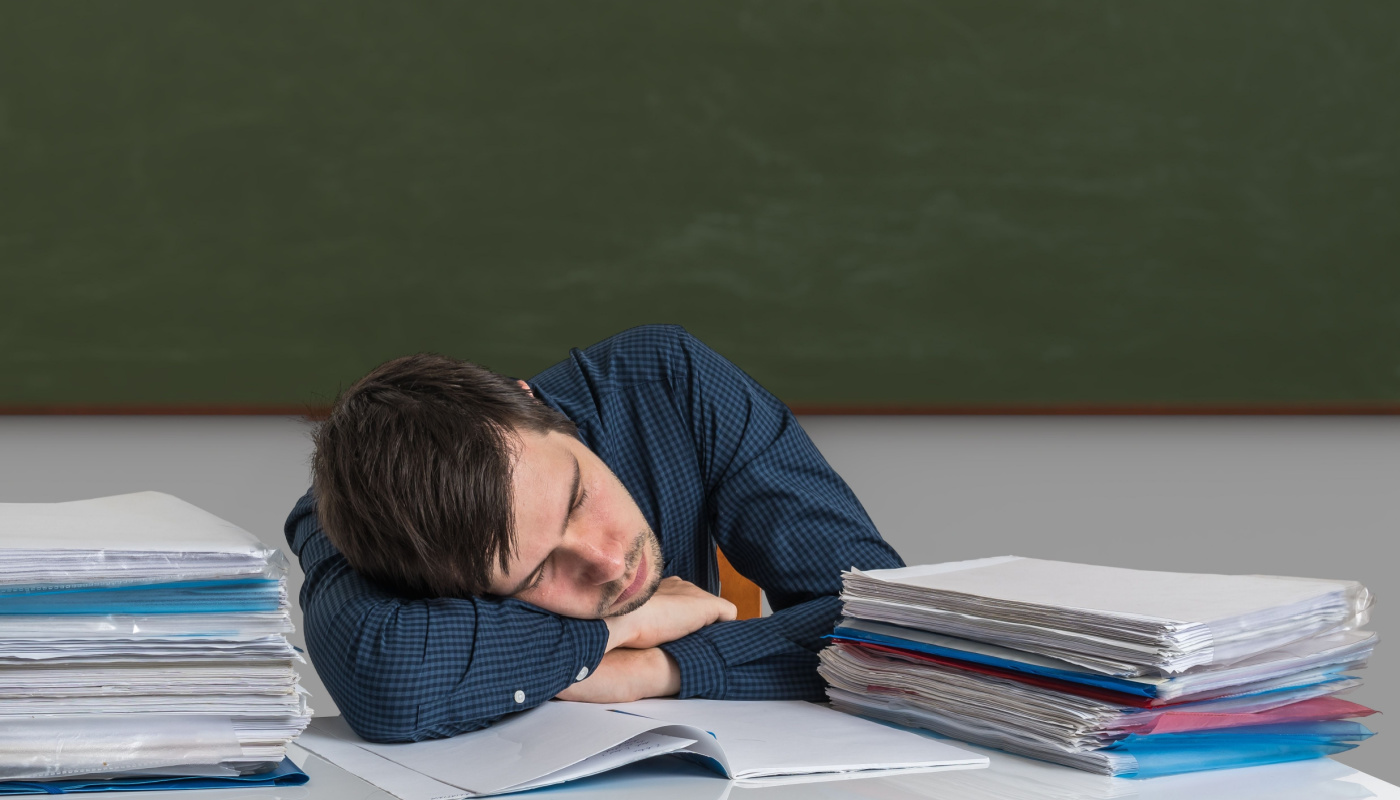
There are few things teenagers love more than sleeping in. While elementary-age kids bounce around the house looking for adventure on weekends, teens and tweens do their best to sleep past noon. Despite this love of sleep, many teens have the earliest start times out of all K-12 students. It’s not uncommon for middle and high school students to be in their first class by 8 a.m.
Researchers who study sleep patterns have long been proposing later school start times for high school students — and some districts are listening. However, there are several complications and drawbacks that come with this action. Learn about the advantages and disadvantages of later start times, specifically for older learners.
The Case in Favor of Delayed Start Times
There is scientific and anecdotal evidence that students suffer when their school day starts too early. Countless teachers have shared stories of sleepy classrooms and lesson plans they have developed to try and get their students to wake up.
“About half of my middle school kids can barely stay awake the first two periods of the day,” says Melissa Rowe, a teacher and blogger. “As for high school, I literally have students who fall asleep on the floor in my classroom.”
Not only do researchers report that students are tired, but they also have been able to track the effects of delayed start times. Biology experts have seen how grades, attendance and participation all increase when students have more sleep.
“Based on the recommendation of sleep experts, the Seattle school district, beginning with the 2016-2017 school year, delayed middle school and high school start times by nearly an hour, from 7:50 a.m. to 8:45 a.m.,” says Horacio de la Iglesia, a professor of biology at the University of Washington.
“In a study our team conducted after the district enacted the plan, we found that students gained 34 minutes of daily sleep – a huge gain by sleep medicine standards. In addition, student attendance and punctuality improved, and median grades went up by 4.5%.”
As various districts across the country benefit from delaying start times, other education leaders are starting to pay attention. This has led to a cascade of debates and policy changes regarding when students should be awake enough to learn.
“Middle and high school students who get eight hours or more of sleep experience less depression, have more energy, are less likely to use tobacco and consume junk food, and make better decisions,” according to a memo by Jharrett Bryantt, superintendent of the Anchorage School District. Because of this information, Bryantt is in favor of delaying school start times.
There may be other benefits to later start times. For example, Harrison Wall at Sleep Junkie says more time in the morning lets students eat breakfast. “When running late in the mornings, breakfast is the first thing we usually skip,” he says. “However, with this bad habit, students are left hungry, making it difficult for them to concentrate in class.” More sleep plus a better diet could significantly improve the learning experience.
If starting an hour later means that more students are awake, fed and ready to learn, then delaying school start times seems like an open-and-shut case. However, changing start policies isn’t that easy and the data might not be as clear-cut as educators think.

Start Times Aren’t the Only Issue
The idea that students are tired because they have to wake up early is true. Thus, delaying start times would give students more time to rest. However, this act alone wouldn’t completely eliminate the sleep deficit of most teens in the United States.
In an article for the Child Mind Institute, contributing writer Juliann Garey breaks down several reasons why teens are sleep-deprived. She highlights the excessive amount of homework and school pressure most students face, plus overbooking with extracurriculars, screen time that keeps kids up long after they put their phones down, and even basic biology as contributing factors.
“Along with the more obvious hormonal changes that transform your child into a teen, are shifts in the production of melatonin, the sleep hormone,” says Garey. “That is why your teenager actually seems more awake at midnight than at dinner and left alone would probably sleep until ten or eleven.”
Sleep deprivation can also compound itself when students find ways to stay awake because they are so tired. “To compensate for sleep deprivation, students try supplementing with caffeine,” says Carolina Jacobs, managing editor at Classrooms. “Coffee, energy drinks, teas, you name it — there are many ways for students to get energized. Around 86% of students consume caffeine, most not knowing the amount in their drinks.”
This creates a cycle where students consume caffeine to stay awake and then are unable to fall asleep at a reasonable hour.
People who argue against starting school later say that teens need to be responsible enough to go to sleep at a reasonable time or parents should enforce screen time limits and bed times.
“I believe that parents should be the ones creating appropriate sleep schedules for their children in order to ensure they are getting enough rest because of the late start time,” says Adriana Aguilar, a resource teacher in California. “But what I see happen is that because they are able to wake up later, teens go to sleep later, and in the end get the same amount of sleep as they were getting with the early school start time.”
Changing Start Times Affects Extracurriculars
Additionally, school start times also impact the number of before-school activities and after-school clubs, sports, and student jobs. One study by Lisa Meltzer et al., published in Frontiers in Sleep, tracked approximately 24,000 students in grades 3-11 to see how later start times impacted extracurricular activities.
They found no significant change in the number of middle and high school students participating in before-school activities. There was a drop in after-school activity participation for middle schoolers and for high schoolers – though the drop wasn’t significant for high school students.
Initially, after the school start change, there was a drop in after-school employment for high school students, but this rebounded when the researchers followed up. This suggests that local employers who wanted to hire students also got used to the new start and end times.
While this survey is comprehensive, there might not be a direct correlation between start times and extracurricular activities. The Afterschool Alliance, a nonprofit that advocates for access to affordable, quality after-school programs, reports that nearly 25 million children don’t have access to after-school programs – a significant increase from 15.3 million in 2004, and about half of the total pre-K to Grade 12 students nationwide.
Parents report that their kids can’t participate in after-school activities because they’re too expensive or there’s no safe way for their child to get to and from those programs.

Delaying Start Times Isn’t Easy
Another significant barrier to adjusting school start times is the logistics that come with changing the schedules of students and parents. Many parents build their own schedules around their kids and would have to find childcare or alternative transportation for their kids because of these new start times.
“Districts often stagger start times for elementary, middle, and high schools to allow for multiple busing runs, lessen traffic congestion, and allow caregivers to drop off children at different schools,” write Kevin C. Bastian and Sarah Crittenden Fuller, research associate professors at UNC-Chapel Hill. “If high schools are starting later, it likely means that elementary and/or middle schools must start earlier.”
Swapping start times so younger learners start earlier isn’t that easy. A few district leaders have heard from parents about how this would disrupt the equilibrium of their households.
“Some families rely on older children to take care of younger siblings after school,” says Drew Cook, assistant superintendent for academics at the Wake Public School System in North Carolina. This isn’t possible if older students are still in class when their younger siblings get home. “Parents [also] may be uncomfortable with elementary age children traveling to school in the dark.”
The legwork for parents is also impacted by the way students get to the classroom. Most parents will drive their kids to school or wait with them at the bus stop. It’s not until kids are older that they can get to school safely on their own.
“Increasingly, it’s parents, not bus drivers, who get behind the wheel for the school commute,” writes columnist Alyssa Rosenberg for The Washington Post. “That’s true even for short distances. Between 1969 and 2009, the number of children aged between 4 and 15 and living within a mile of school who got there on foot or by bicycle fell from 89 percent to 35 percent.”
Finally, while some districts have been able to make changes to start times, it’s unlikely that adjustments will be made on a national scale. Before the pandemic, 83 percent of high schools had 8:30 a.m. (or earlier) start times, with most starting at 8:00 a.m. and 10 percent at 7:30 a.m., writes Constance Sommer at the Sleep Foundation.
Right now, school start times are considered a district issue. This means it’s up to parents to find schools and counties that have start times that align with their schedules.

Teachers Are Also Affected by Later Start Times
While parents have to figure out the logistics of later start times, there’s another group of adults who might be in favor of the new schedules: teachers. In an article for Education Week, assistant editor Sarah D. Sparks says teachers can benefit from these late start times, too. It is recommended that adults get at least seven hours of sleep each night, but more than one in three Americans miss that mark.
“Teachers, in particular, tend to have awful sleep habits,” says Sparks. “Prior studies have found more than 40 percent of teachers get inadequate sleep on weekdays—with high school teachers getting more than 40 minutes less rest on average than other workers—and a majority of secondary teachers reporting signs of excessive sleepiness during the day.”
While a later start time could give teachers more sleep, it doesn’t mean that they would take it. Some educators might use that time to get to work earlier to grade papers, send emails and plan their lessons for the day.
If you’re in favor of later start times and want to advocate for them as a parent or educator, there is an organization you can join. Start School Later is a nonprofit that lobbies for later start times for schools. The group publishes facts about the health benefits of starting later and hosts workshops and webinars on how local teachers can become advocates.
Like so many aspects of education, school start times don’t come with an easy solution. There are logistical complications for implementation and environmental factors affecting the results that might prove these changes are beneficial. As more districts adjust their start times, however, educators, parents and students can track the results and decide whether the change is right for them. For now, the best anyone can do is try to get a good night’s rest before the next school day.
Images used under license from Shutterstock.com.

